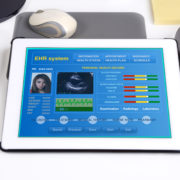Why Concepts Matter More in EHRs Than Technology
Most people already know that technology can be a double-edged sword when it comes to productivity. Sometimes it streamlines the day, but other times it brings hiccups of epic proportions. EHRs can get a bad reputation in medical offices today, but it’s often because people (both developers and users alike) are approaching the problem from the wrong mindset. When it comes to any kind of technology, it’s the concepts behind it that are the most valuable.
The Problems
If you’re like most healthcare organizations in the US, you’re likely spending about 28% of your total budget on administrative costs. And when it comes to what you’re spending and what you’re saving, it’s not always obvious where the inefficiencies lie. It may look as though each component is not only necessary but also dependent on every other process. It doesn’t help that even small updates to the software seem to cause large amounts of confusion among staff. EHRs are supposed to save time and ultimately money while improving accuracy and safety. But how can this truly happen if every few weeks there’s a new upgrade that office staff has to adjust to?
Stepping Up the Game
There is plenty of proof that EHRs can make an office run more efficiently, but part of this success is based on the staff’s understanding of the EHR. It’s not as important for them to have perfect command over each and every feature of the system as it is for them to understand what the system is attempting to do for them. From making it easier to input codes to mitigating the risk of compliance errors, every office has their own priorities. This way, if the main problem isn’t being solved, someone can speak up and the office can collectively take a look at what can be done to fix the problem.
Let’s say the EHR was meant to save doctors about 15 percent of the time they spend doing administrative tasks. If the EHR is only saving 5 percent (or even 0 percent), it’s a sign to go back to the drawing board or to contact the manufacturers of the EHR for additional tips on how to hit your goals. Certain organizations may benefit from a highly customizable solution while others may need something that’s more rigid so there are fewer anomalies and one-offs. Sometimes too much choice leads to confusion, chaos, and a breach of safety.
The Solutions
Part of finding a solution for any office is to truly define the problem. Staff leaders should be as specific as possible when it comes to what they want. Billing, coding, and patient history are always going to take up a significant portion of the day, but what is a realistic improvement that can be made office-wide? Once the staff knows, they can start learning more about how the EHR works to address that particular problem. As long as they have a solid understanding of the principle behind the system, they may not be as confused if there are minor changes to the system.
Experience Counts
Exscribe makes EHRs specifically designed for orthopedic practices, and we can say with certainty that our products help offices of all sizes tighten up their operations. No matter what you’re looking for or how your current EHR is working for you, chances are we’ve dealt with the problem before. As mentioned, there are mixed feelings across the board with EHRs, but there are ways to make them work for you. Look for a company who understands the practical as well as the idealistic aspirations of how people interact with technology on an everyday basis.











